Subtotal: £0.00
Weaving Terms
There are many styles of willow weaving. These include:
There are many styles of willow weaving. These include:
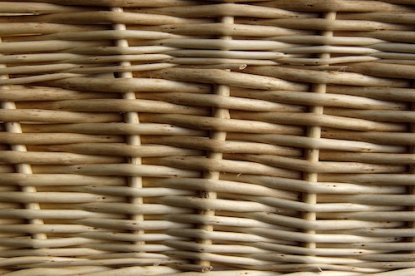
Using single strands of willow to weave. Randing is the strongest weave. Gives a fine look. Hampers, Shallow baskets & Baskets with sloping sides are usually randed.
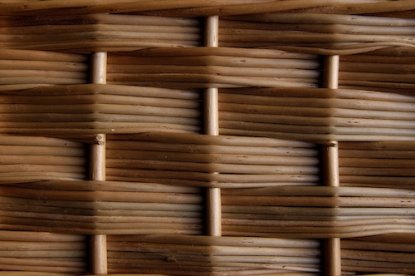
Using multiple strands of willow to weave. Gives a more decorative finish than randing. Kitchen drawers, taller storage boxes, log baskets are usually slewed, but also as slewing gives a more decorative finish.
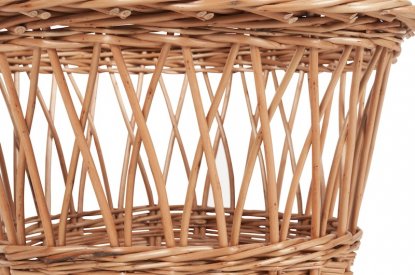
Open work weave with parallel or criss-cross rods. A decorative, but strong, weave, often used in furniture. Found in many baskets too.
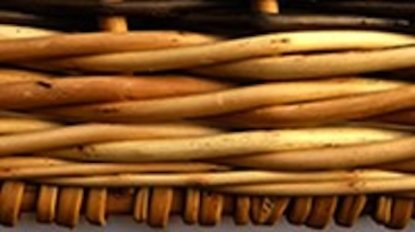
A special weave to add strength and shape to a basket. Found around the base of a basket to set the shape and thereafter mainly on taller baskets to maintain the shape and give strength. Often used artistically in contrasting colour.
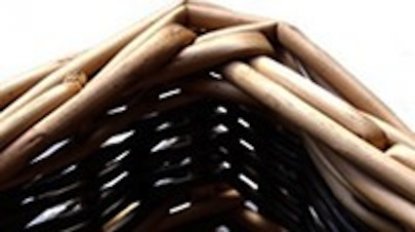
The weave around the top of the basket. The border ties in the weave and gives a strong finish to the basket. The type of border varies depending on the style and type of basket.
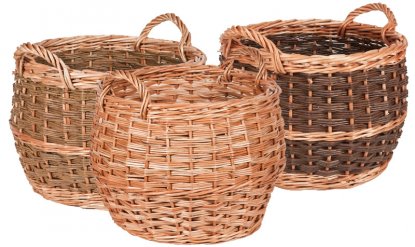
Willow comes is a range of colours, both before and after it's processed for weaving. Colours include buff, white, brown, steamed and green, and you can see how some of these look when made into a basket on the right hand side. On the product pages in our online shop we try to show every product in the colour options that you can buy them in.
The four colours are all totally natural, there is a dye or tannin in the bark of the willow and by using different processing techniques we produce the different colours.
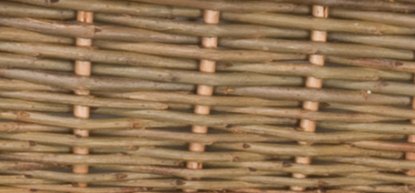
This is the most natural colour and at the same time the most confusing! When willow is freshly cut we call it "green". It can be used for weaving without soaking it and is quite shiny and fresh looking, but it eventually dries out and becomes brown willow. Brown willow needs soaking for a few days and is less shiny looking. Green and brown willow is used for outdoor products which benefit from the protection the bark gives them. Nothing at all is done to the willow to achieve this colour.
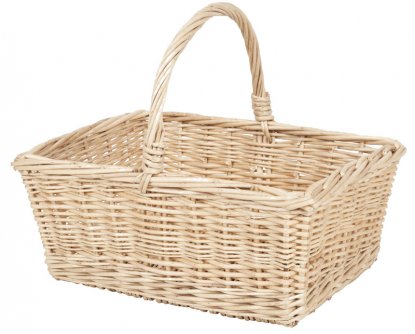
At harvesting time a small portion of the crop is stood in about 30cm of water. This keeps the willow alive, just like keeping flowers in a vase of water. In the spring time the willow begins to grow again, and at this time there is a period of about 6 weeks when we can remove the bark and reveal the creamy white willow beneath.
Traditionally white willow was used for weaving bakers' baskets, babies cradles and washing baskets.
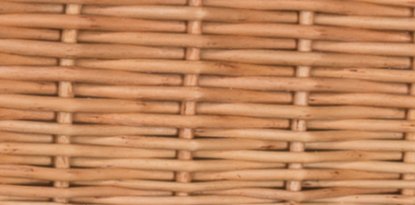
The willow is boiled for 10 hours in a vat of water, this softens the bark enough to remove it. During the boiling process the natural dye in the bark stains the willow the familiar buff colour. Buff willow is the most common colour we produce. It only needs to be soaked for a few hours before being used for weaving.
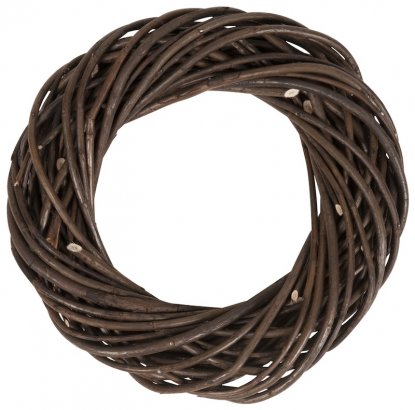
By soaking the willow in boiling water for a short time the natural dye is released and stains the bark a very dark brown. The willow is not left in the water long enough for it to soften the bark so the bark does not peel off. Once the steamed willow is dried it has to be soaked for a few days before it can be used for weaving in exactly the same way brown willow does. Most of our hurdles are made using steamed willow.